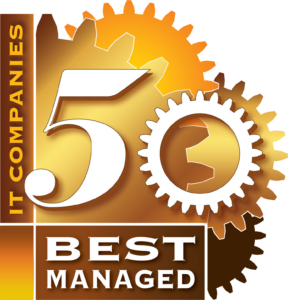
How to Secure Remote Workers the Right Way
How to Secure Remote Workers the Right Way
How can you secure remote workers’ IT?
One of the challenges that organizations have faced in the last year and a half is how to secure remote workers’ devices when they’re at home.
In a more traditional working environment, when everybody was in the office, a lot of the energy around IT security was focused on the network. It was focused on how do we protect the devices that are here.
That has changed dramatically in the last year as more and more people are working from home. And now the focus is not on the corporate network, it’s on how do we secure endpoints that could be anywhere.
Maybe that’s at home, maybe it’s traveling, maybe it’s at a coffee shop. But wherever it is, it needs to be kept secure.
Keeping Up with Secure Remote Workers
There are some unique challenges with having remote devices.
Some of the specific challenges that we’re seeing are, for example, kids that are using the devices at home. Maybe there are other people that are logging into company devices. So how do you protect your organization and make sure that your data is safe?
Also, you have to accommodate the needs of the individuals that are using those devices as much as you can. One of the risks of taking our devices outside of the corporate network is the security of the networks that we’re connecting to.
If somebody wants to escape the house for a little bit, they might take their computer and go to Starbucks. If they set up on the patio and connect to the Starbucks WiFi, what exactly are the risks to the organization?
A lot of people don’t realize that if you don’t have the proper precautions in place when you are connected to those networks, somebody else that’s also connected to the network can gain access to the information that’s passing back and forth.
There’s a lot of tools that can be put in place, and there’s a lot of technology solutions to solve that problem, but it is something that needs to be addressed and it is something that is a risk to an organization. And you want to make sure that you’re addressing that before your people connect to external networks.
So how do we secure these devices that are now no longer on our local network?
Fundamentals of Remote Device Security
It really starts with some fundamentals, like an acceptable use policy. Are people’s children allowed to use their computers in the evening? Are they allowed to use their home devices to connect to the corporate network? Setting those guidelines can go a long way to securing your infrastructure.
There are also a lot of technology tools that can be used to secure those devices. Having good endpoint protection software is a really good start.
There are a bunch of different monitoring tools as well. One of the ones we recommend is something that monitors the activities on the device.
If there’s something that looks strange or out of the ordinary, that can trigger an alert and somebody can jump on and see what’s going on.
It really starts with securing your information. That means having encryption turned on and some kind of secure access method when you are connecting back into the corporate network.
You want to make sure that you’re not connecting via an unencrypted network. And so you could use a VPN or a more modern tool like a secure access service edge. But the tool you use really depends on your organization and the needs you have, and where your information lives. Is it in your corporate data center, for example, or in the cloud?
Leveraging Your IT Strategy for Secure Remote Workers
Another fundamental is developing an IT strategy. You need to understand what you have and put in a strategy in place to secure your particular infrastructure based on your needs.
One of the things that CopperTree has developed to help our clients secure their devices is something we call our security program. This is a suite of tools that your organization can leverage. And some of them are specifically focused on the endpoint. That’s the focus now because devices are increasingly mobile. We have to focus less on the corporate network and more on the endpoint itself.
There are different types of endpoint protection software tools. Traditional antivirus tools are signature-based. They run scans on your computer a couple of times a day and look for any files that are out of place.
There are also next-generation antivirus software tools. These are more behavioral-based. They watch what’s happening on the computer, and if something acts differently than it’s expecting, it’ll lock it down, take it off of the network, and keep it contained so that it can’t impact anything else.
There’s a list of about seven or eight different tools that we use in our security program. And a lot of them are focused on the endpoint. Another one that we should highlight, however, is user training.
End-User Security
When you think about IT security, you can have all the right tools in place and you can have all the right technology in place, but the weakest link is usually a user that isn’t cautious or isn’t familiar with what to look out for.

We put a lot of time and energy into training our users. There is video-based training that they go through to understand what to watch out for and what the risks are.
We also do some security tests. We’ll send out some fake phishing emails to see who clicks on the links.
It’s always interesting to see what the results of that are. We’ve met a lot of people that were pretty confident in their employees and in their IT security. But when you actually do the tasks and you get some results back to say here’s what happened, it can be quite enlightening and eye-opening to realize that maybe your users aren’t quite as security conscious as you’d like to believe.
At CopperTree, we have a program and a process that we use to manage IT security for our clients. Part of it is their security program, but part of it is also just general best practices.
As we do maintenance on our client’s infrastructure every month, we’re aligning our clients with our best practices. If there’s a security setting that we feel is beneficial, we will roll that out to our clients. And so every month as we do the maintenance, we’re bringing you into alignment with our best practices and ultimately minimizing risk in your organization.



